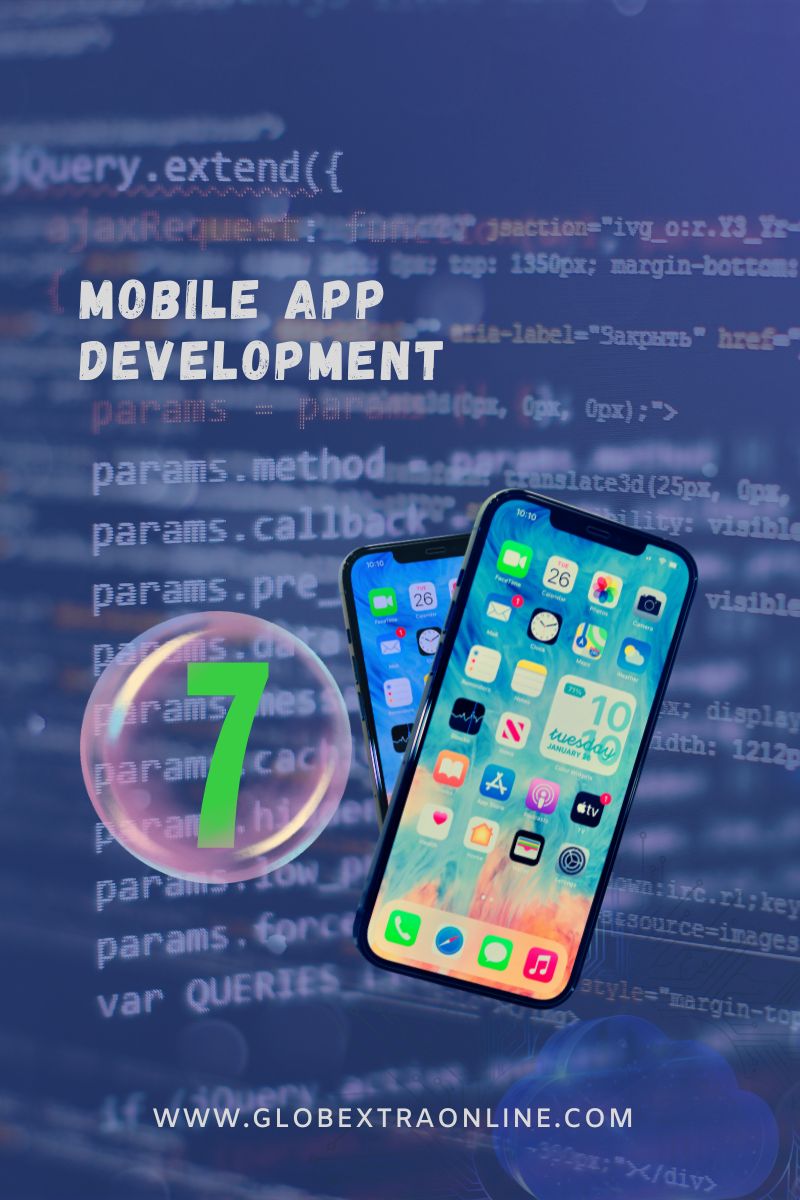When using your mobile, have you ever thought about the process behind the seamless experience? If the thought has never crossed your mind, read our blog on mobile app development and be guided by 7 amazing facts that will make you reimagine the way you look at a mobile phone.
At Globextra, we are passionate techies and love to consume technology with our morning tea. We are on a mission to educate you about why you should choose us and our services through our blogs.

Mobile App Development – 7 On The Go Facts To Know
Mobile or cell phones have made life easy for us and one cannot think of a world without them. However, have you thought about behind-the-scenes technology that gives you the ease of use? If you have never thought about this, we hope by the end of the blog you will see that phone in your hand in a new avatar.
Let us get to know our cell phones better.
1. The Interesting History Behind Mobile Phones
Technology offers a very interesting read and the same is true for mobile applications. Let us see where and how it began.
The history can be traced to the 1980s when the first personal digital assistants (PDAs)came into existence. However, owing to basic functions like calendars and clocks that left little scope for development. The big boom came in the 21st century with the evolution of smartphones.
This evolution is how we perceive mobile phones today.
2. What Do You Understand By Mobile Application Development?
Let us get to know what the term refers to in a broader spectrum.
Mobile app development refers to the process of creating software applications that run on portable devices, such as smartphones and tablets. They cater to varied needs like entertainment, productivity, education, e-commerce, health monitoring, etc.
One can only imagine the tasks that can be achieved and on the move.
3. Getting To Know The Different Types of Development Offered To Its Users
Let us examine the types that mobile app development offers, some of which are mentioned below.
- Native App Development: These are built specifically for a single platform (iOS or Android) and will work only as per the predefined rules set by the portable platform.
For better understanding let us know the advantages and disadvantages to it.
High performance and response, easy access to all device features like camera, GPS, etc, a uniform user experience throughout are some advantages worth mentioning.
On the other hand, this proved to be expensive and time-consuming at the same time as individual apps for each platform are needed. This was seen as the biggest negative.
- Cross-Platform App Development: Built using a single codebase that functions on multiple platforms.
Some perks that it is known for are
Faster development process.
Cost-effective.
Consistency.
This also has disadvantages like
Performance may not always match with native apps.
Access is limited to platform-specific features. This means it will work only on the guidelines of the respective platform.
- Hybrid App Development: These are a combination of web and native apps. They run inside a native app and make use of web technologies.
You get to enjoy below mentioned benefits
Faster development than native apps.
Easy maintenance.
Ability to use across multiple platforms.
Getting to know the disadvantages that come as a bundle below.
Slow in performance when compared with native apps.
High third-party tools dependency for accessing device features.
- Web App Development: These run on browsers and cannot be downloaded or installed from app stores.
You get to enjoy some advantages like
Ease of access that is not device or browser-dependent.
Cost-effective.
Easy to maintain.
No need for an app store.
The disadvantages worth mentioning are
Limited functionality compared to native apps.
High internet dependency.
- Progressive Web App (PWA) Development: This can be termed as a web app that delivers a native-like experience using modern web capabilities.
When using the app some benefits that can be enjoyed are
Faster access.
Work can be done offline.
No installation via an app store is needed.
The flip side to know are mentioned below:
Limited access to device features as compared to native apps.
Some features will not be supported.
- Enterprise Mobile App Development: These are specially developed for businesses to improve their operations, productivity, and communication.
You get to enjoy some advantages like
Custom made as organizations.
Lays high emphasis on security and growth.
High cost which makes it non accessible to all is the only drawback of enterprise mobile app development
- Gaming App Development: Centric on developing games for mobile platforms.
You can enjoy some advantages like:
Capturing a huge market
Diverse monetization opportunities through ads, in-app purchases, etc.
This has its disadvantages which is it needs advanced graphics and optimization.
4. Considering The Benefits & The Disadvantages
Let us introspect its advantages and disadvantages below.
The advantages you can enjoy are
- Enhanced User Experience
- Ease to use offline i.e., without internet
- Speed and Performance
- Push Notifications
- Access to Device Features
- Branding Opportunities
Let us talk about the drawbacks
Comes with high development costs
Requires timely maintenance and updates for smooth running
Has limited Reach as needs to be downloaded, and installed before usage.
Storage and Performance Issues
Vulnerable to security threats such as data breaches, malware, or unauthorized access, requiring heavy security measures.
Dependency on Third-Party Tools
5. Considering The Tools That Form The Backbone
Here we will talk about the tolls for two leading giants ie, android and iOS. Let us get to know them better.
Tools for Android are as seen below.
Android Studio
Kotlin Programming Language
Firebase
GitHub
Jira
On the other hand, some tools that work on the Ios platform are mentioned below
Swift
Parse
Peckham
RayGun
AlamoFire
6. Getting To Know The Network Journey
This section will tell you all about the advancements that have been made in this field. Let’s get to know them.
1G – The Birth of Mobile
The first-generation (1G) journey of mobile networks was introduced in the 1980s and this is where the fascinating journey started. Simple voice calls were only supported owing to the analog system. Thus cal quality was poor and connections were unstable. This resulted in constrained capacity. Irrelevant of the drawbacks, it paved the way for improvements in the field.
2G – The Rise of Digital Communication
This network first made an appearance in the 1990s. With the introduction of digital communication in 2G, the frequency spectrum could be used more effectively, and call quality improved making it an overnight star. GSM (Global System for Mobile Communications), offered utilities like text messaging (SMS) and image messaging (MMS) that paved the way for success.
3G – The Era of Mobile Internet
As the need for data-driven services increased 3G network gained popularity in the early 2000s. High-speed mobile internet access was made available by 3G networks, enabling users to browse the web, check emails, and even stream media on their mobile devices. The development of smartphones changed cell phones into portable computers and changed the whole concept.
4G – The Age of Mobile Broadband
Mobile connectivity reached entirely new heights with the fourth generation (4G) networks in the late 2000s. Data speeds, network stability, and overall performance are some merits. This acted as a boon for applications that required huge bandwidth, like video conferencing, online gaming, and streaming high-definition video.
5G – The Next Frontier
Fifth generation (5G) networks, the most advanced mobile communication technology, began in the past ten years and is a total game changer. Lightning-fast speed, no delays, and widespread connectivity, 5G has completely changed the trend for mobile phones.
Network developers are working on a 6G network which will surely be a step up from 5G. What it will offer, the perks, etc are all in retrospection and we can only wait.
7. Want To Know The Best Tools That Are Common for iOS & Android?
Let us see the common yet best tools that work with Android and iOS which are mentioned below
Flutter
Sencha Touch
Framework7
Unity
Titanium
PhoneGap
Before we end this blog, let us see some tips to help you further
- Perform a market research
- Know the target audience
- Choose a platform based on the need
- Design an appealing user interface.
- Establish a connection with Playstore
- Keep it simple
- Test before releasing so there are no glitches
- Work on a timeline
- Use UX
This concludes our blog and we hope that you were able to understand mobile app development. We are open to questions and you can always reach us through our website.
Happy Developing!!!

Leave a Reply